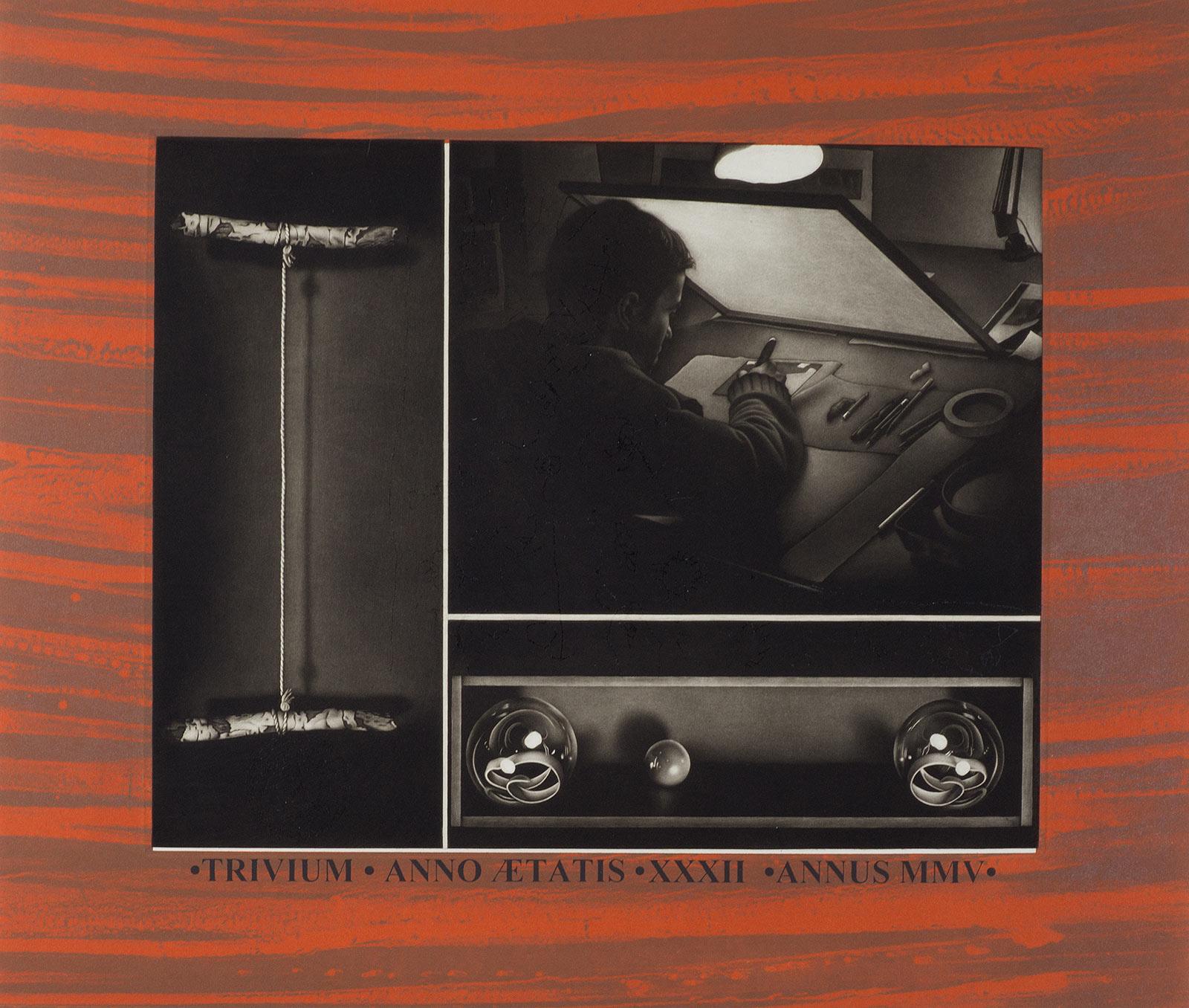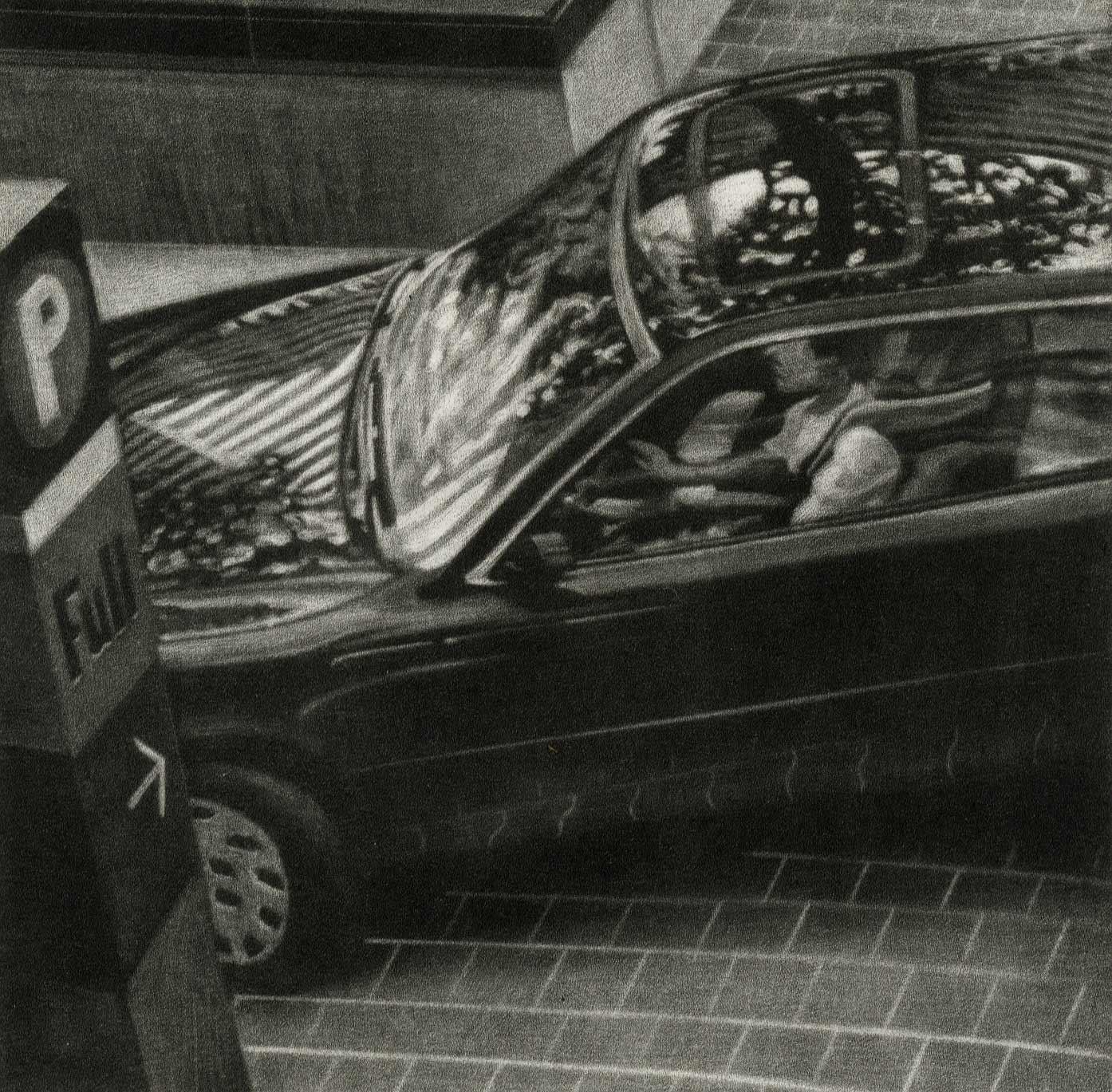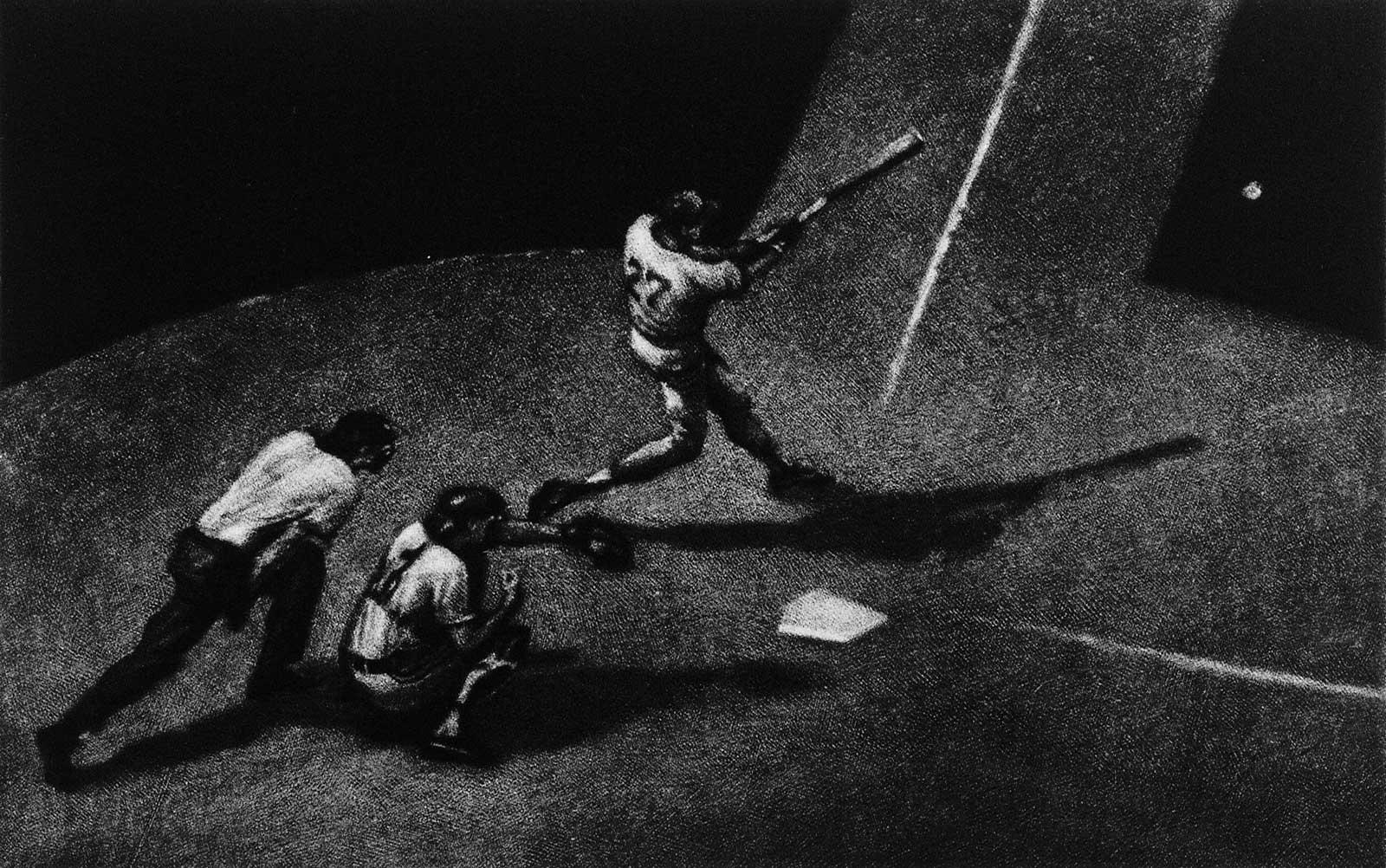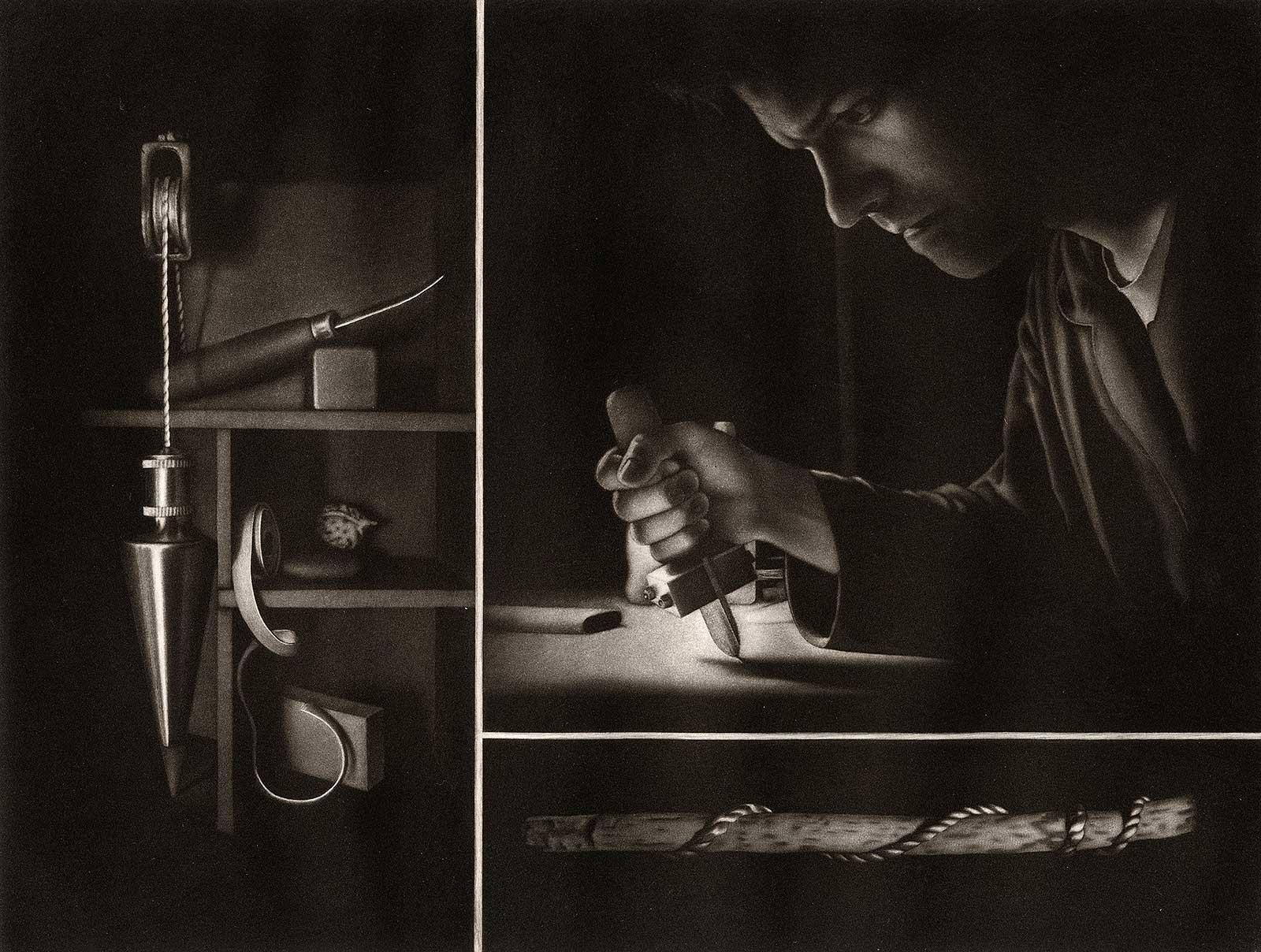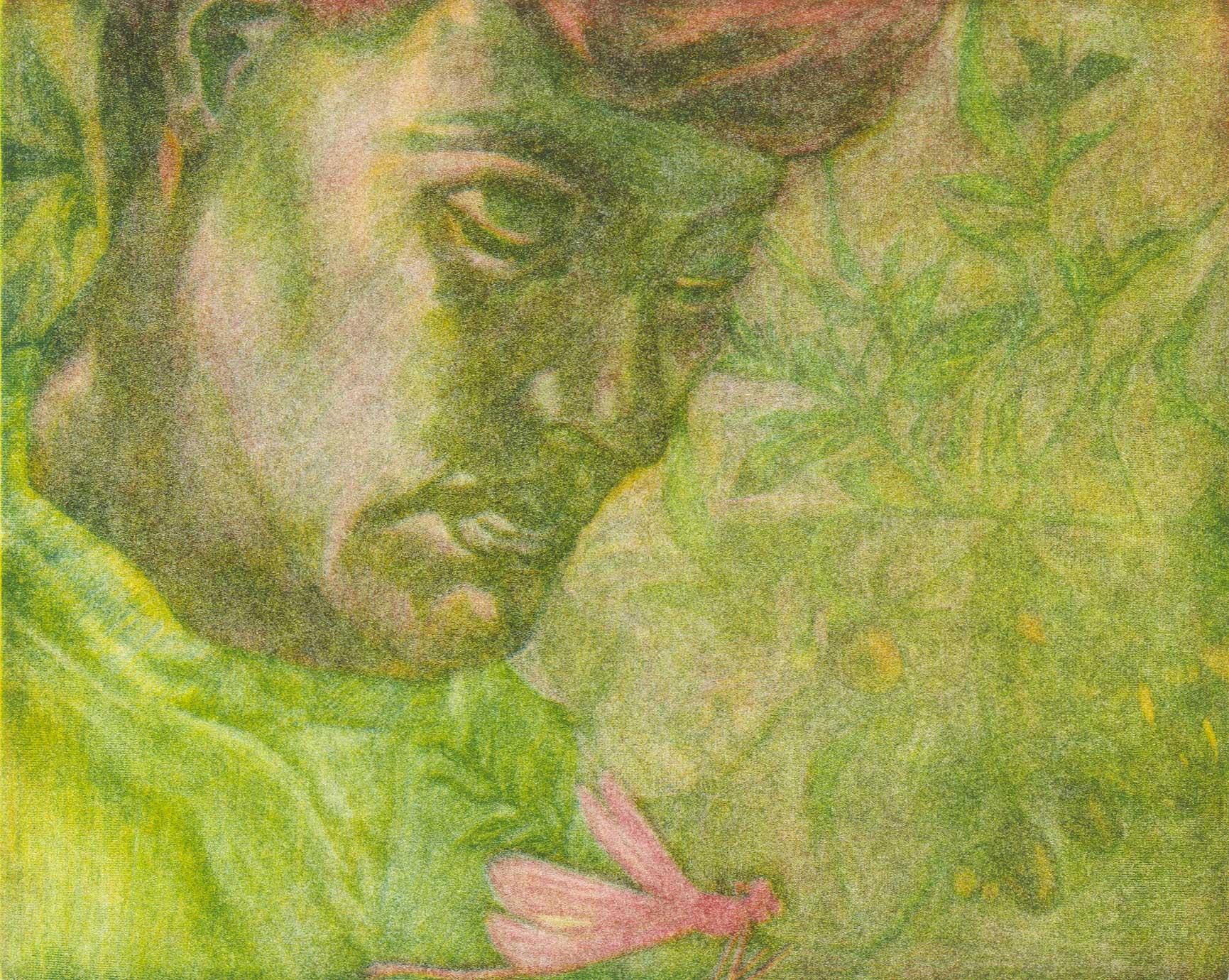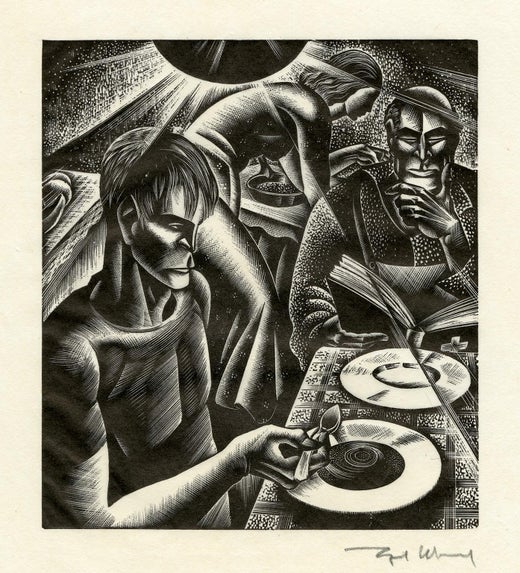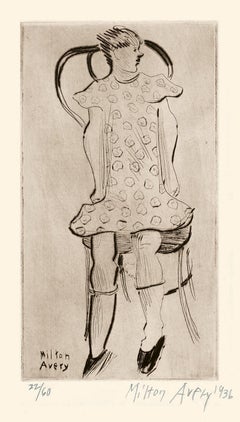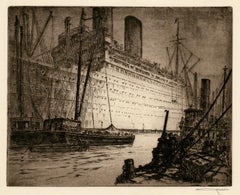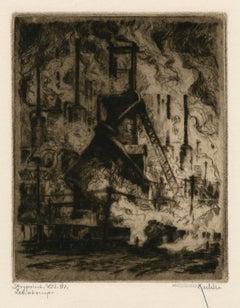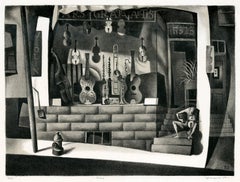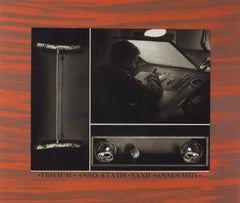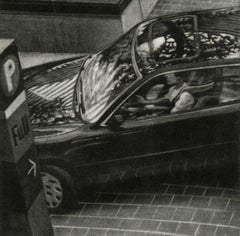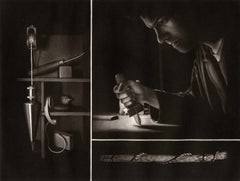Items Similar to 'Priests' from 'In Praise of Folly' — Mid-Century Graphic Modernism
Want more images or videos?
Request additional images or videos from the seller
1 of 3
Lynd Ward'Priests' from 'In Praise of Folly' — Mid-Century Graphic Modernism1943
1943
On Hold
$850
On Hold
£644.04
On Hold
€738.98
On Hold
CA$1,196.09
On Hold
A$1,314.83
On Hold
CHF 691.01
On Hold
MX$15,966.81
On Hold
NOK 8,620.22
On Hold
SEK 8,167.06
On Hold
DKK 5,515.20
About the Item
Lynd Ward, 'Priests' from the series 'Moriae Encomium (The Praise of Folly)', mezzotint, 1943, no edition, proofs only. Signed in pencil. A superb, richly-inked impression, on cream wove paper; the full sheet with margins (1 1/4 to 2 inches) in excellent condition. Matted to museum standards, unframed. Scarce.
Image size 7 3/4 x 4 3/4 inches (197 x 121 mm); sheet size 10 11/16 x 8 1/16 inches (271 x 204 mm).
Created by the artist for 'Erasmus's Moriae Encomium,' or 'In Praise of Folly,' published by the Limited Editions Club, 1943. A rare, signed, proof impression apart from the Limited Editions Club publication.
ABOUT THE ARTIST
Lynd Ward is acknowledged as one of America’s foremost wood engravers and book illustrators of the first half of the twentieth century. His innovative use of narrative printmaking as a stand-alone storytelling vehicle was uniquely successful in reaching a broad audience. The powerful psychological intensity of his work, celebrated for its dynamic design, technical precision, and compelling dramatic content, finds resonance in the literature of Poe, Melville, and Hawthorne. Like these classic American writers, Ward was concerned with the themes of man’s inner struggles and the role of the subconscious in determining his destiny. An artist of social conscience during the Great Depression and World War II, he infused his graphic images with his unique brand of social realism, deftly portraying the problems that challenged the ideals of American society.
The son of a Methodist preacher, Lynd Ward, moved from Chicago to Massachusetts at an early age. He graduated from the Teachers College of Columbia University, New York, in 1926, where he studied illustration and graphic arts. He married May Yonge McNeer in 1936 and left for Europe for their honeymoon in Eastern Europe. After four months, they settled in Leipzig, where Ward studied at the National Academy of Graphic Arts and Bookmaking. Inspired by Belgian expressionist artist Frans Masereel's graphic novel ‘The Sun,’ and another graphic novel by the German artist Otto Nückel, ‘Destiny,’ he determined to create his own "wordless" novel. Upon his return to America, Ward completed his first book, ‘God's Man: A Novel in Woodcuts,’ published in 1929. ‘Gods’ Man’ was a great success for its author and publisher and was reprinted four times in 1930, including a British edition. This book and several which followed it, ‘Madman’s Drum,’ 1930, ‘Wild Pilgrimage,’ 1932, ‘Prelude to a Million Years,’ 1933, ‘Song Without Words,' 1936, ‘Vertigo,’ 1937; and ‘Last Unfinished Wordless Novel’ (created in the 1960s and published in 2001) were comprised solely of Ward's wood engravings. Ward designed each graphic image to occupy an entire page, the sequence of which conveys the story's narrative.
In 1937, Ward was named Director of the Graphic Arts Division of the Federal Art Project, a division of the Works Progress Administration (WPA). In the following years, Ward went on to illustrate more than one hundred books (some of which he wrote), including classics for the Limited Editions Club Goethe’s ‘Faust,’ Faulkner’s ‘A Green Bough,’ and Mary Shelley’s ‘Frankenstein,’ and several children’s books. He also produced single-subject wood engravings, paintings, and drawings. His print ‘Sanctuary,’ 1939, was shown at the 1939 New York World’s Fair, and ‘Clouded Over,’ 1948, received the 1948 Library of Congress Award and was included in ‘American Prize Prints of the 20th Century’ by Albert Reese. He received the National Academy of Design Print Award (1949), the New York Times Best Illustrated Award (1973), and the Regina Award (Catholic Library Association, 1975). ‘The Biggest Bear,’ a children’s book with illustrations by Ward, was the recipient of the esteemed 1952 Caldecott Medal of the American Library Association.
An Honorary Fellow of the Royal Society of Painter-Etchers and Engravers, Ward was a member and board member of the National Academy of Design and the Artists’ League of America. He served several terms as president of the Society of American Graphic Artists and was a member of the American Artists Congress and the Society of Illustrators. Ward exhibited at the American Artists Congress; the National Academy of Design; the John Herron Art Institute; and the Library of Congress. He had a one-person show at Associated American Artists, NY, on the publication of his monograph 'Storyteller Without Words,' 1974; AAA mounted a memorial exhibition in 1986. The May 1976 issue of 'Bibliognost,' a book collector’s publication, was dedicated to Ward. ‘Lynd Ward, His Bookplate Designs,’ an article by Dan Burne Jones, was published in the American Society of Bookplate Collectors and Designers Yearbook, 1981/82.
In 2001, sixteen years after his death, Rutgers University Libraries published ’Lynd Ward’s Last Unfinished Wordless Novel.’ The blocks were intended to be part of a novel in woodcuts, the first since Vertigo, but Ward did not live to complete the project. Master printer and book designer Barbara Henry collated and printed the twenty-six finished blocks out of the forty-four initially planned for the still unnamed narrative.
In 2010 the Library of America honored Ward’s achievements with the meticulous production of a collection of Ward’s woodcut novels—the first time the Library had gone wordless. The publication replicated his original editions with a single full-size image printed on the right page of each double-page spread. In his introduction to the books, renowned cartoonist/illustrator Art Spiegelman comments, “Ward had a genius for caving human movement, and watching his characters walk through their storylines is a particular joy of his novels. You see a very tightly woven narrative that rewards contemplation and a revisiting of how it’s told as well as what’s being told. Each of his books teaches itself. As you’re reading, you understand better how to read each book—the speech and rhythms of what one can find as one revisits a picture. The whole point of Ward’s work is to make you look and understand.”
The Grolier Club in New York mounted a one-person exhibition of Ward’s work from November 19, 2015, through January 16, 2016, displaying the wide range of his graphic accomplishments in woodcuts, lithography and mezzotint, brush drawings, line drawings, watercolors, and paintings.
An extensive archive of work by Lynd Ward is in the Georgetown University Art Collection, Washington, DC. Among the many other public collections representing his work is the Baltimore Museum of Art, British Museum, Cleveland Museum of Art, Farnsworth Art Museum, Fine Arts Museums of San Francisco, Georgetown University, Library of Congress, McNay Art Museum, Newark Museum, New York Public Library, Metropolitan Museum of Art, Museum of Modern Art, Pennsylvania Academy of the Fine Arts, Pennsylvania State University, Philadelphia Museum of Art, Rhode Island School of Design, Smithsonian American Art Museum, University of Chicago, and the Zimmerli Art Museum (Rutgers University).
- Creator:Lynd Ward (1905 - 1985, American)
- Creation Year:1943
- Dimensions:Height: 7.75 in (19.69 cm)Width: 4.75 in (12.07 cm)Depth: 0.01 in (0.26 mm)
- Medium:
- Movement & Style:
- Period:
- Condition:
- Gallery Location:Myrtle Beach, SC
- Reference Number:Seller: 1037691stDibs: LU532312094192
Lynd Ward
Lynd Ward was an American artist and storyteller, known for his series of wordless novels using wood engraving, and his illustrations for juvenile and adult books. His wordless novels have influenced the development of the graphic novel. Strongly associated with his wood engravings, he also worked in watercolor, oil, brush and ink, lithography and mezzotint. Ward was the son of Methodist minister and political organizer Harry F. Ward.
About the Seller
5.0
Recognized Seller
These prestigious sellers are industry leaders and represent the highest echelon for item quality and design.
Platinum Seller
Premium sellers with a 4.7+ rating and 24-hour response times
Established in 1995
1stDibs seller since 2016
321 sales on 1stDibs
Typical response time: 1 hour
Associations
International Fine Print Dealers Association
- ShippingRetrieving quote...Shipping from: Myrtle Beach, SC
- Return Policy
Authenticity Guarantee
In the unlikely event there’s an issue with an item’s authenticity, contact us within 1 year for a full refund. DetailsMoney-Back Guarantee
If your item is not as described, is damaged in transit, or does not arrive, contact us within 7 days for a full refund. Details24-Hour Cancellation
You have a 24-hour grace period in which to reconsider your purchase, with no questions asked.Vetted Professional Sellers
Our world-class sellers must adhere to strict standards for service and quality, maintaining the integrity of our listings.Price-Match Guarantee
If you find that a seller listed the same item for a lower price elsewhere, we’ll match it.Trusted Global Delivery
Our best-in-class carrier network provides specialized shipping options worldwide, including custom delivery.More From This Seller
View All'Little Girl' — American Modernism
By Milton Avery
Located in Myrtle Beach, SC
Milton Avery, 'Little Girl', drypoint, 1936, edition 60, Lunn 11. Signed, dated, and numbered '22/60' in pencil. A superb impression, in warm black ink with delicate overall plate tone, on off-white wove paper, with wide margins (2 5/8 to 4 1/8 inches); hinge stains on the top sheet edge, verso, otherwise in excellent condition. Matted to museum standards, unframed.
Image size 8 3/4 x 4 3/4 inches (222 x 121 mm); sheet size 14 7/8 x 13 1/8 inches (378 x 333 mm).
Collections: Cantor Arts Center, National Gallery of Art.
ABOUT THE ARTIST
"I never have any rules to follow; I follow myself."
"I paint not by sight but by faith. Faith gives you sight."
—Milton Avery
'His is the poetry of sheer loveliness.'
—Mark Rothko in his 1965 eulogy to Avery.
Milton Avery (1885-1965) is recognized as one of America's foremost modernist artists, renowned for his uniquely expressive style, evocative use of color, and captivating compositions.
Growing up in a working-class family in Altmar, New York, Avery's early life was marked by the struggles and realities of rural New York. Despite lacking formal artistic training, he displayed an innate talent for drawing from an early age. In 1905, his family relocated to Hartford, Connecticut, where he worked various odd jobs while developing his artistic skills through self-study and experimentation. In 1915, he enrolled at the Connecticut League of Art Students, where he received formal instruction and began to refine his distinctive style.
In 1918, Avery transferred to the School of the Art Society of Hartford and worked in the evenings so that he could paint during the day. He became a member of the Connecticut Academy of Fine Arts in 1924. That summer in Gloucester, Massachusetts, he met the artist Sally Michael...
Category
1930s American Modern Figurative Prints
Materials
Drypoint
'Cargo Carriers' — New York Harbor
By Otto Kuhler
Located in Myrtle Beach, SC
Otto Kuhler, 'Cargo Carriers', etching and drypoint, c. 1932, edition 10, Kennedy 44. Signed in pencil. A superb, atmospheric impression with rich burr and selectively wiped overall plate tone, in dark brown ink, on Arches cream laid paper; wide margins (2 to 2 3/4 inches), in very good condition. Printed by the artist. Original Kennedy Galleries mat and label. Very scarce.
"On my trips up and down N.Y. harbor on the Weehawken Ferry, the late evening sun playing on the side of the big liners has always intrigued me... The liner shown I believe to be the Vaterland of the North German Lloyd...
Category
1930s American Modern Figurative Prints
Materials
Etching, Drypoint
$1,440 Sale Price
20% Off
'The Furnace' — American Expressionism
By Otto Kuhler
Located in Myrtle Beach, SC
Otto Kuhler, 'The Furnace', drypoint, edition 26, 1924, Kennedy 5. Signed and annotated 'Drypoint. Ltd Ed. Del. et imp.' in pencil. Titled in pencil, in the bottom center sheet edge....
Category
1920s American Modern Figurative Prints
Materials
Drypoint
'Nero' — Mid-Century American Modernism
By Benton Murdoch Spruance
Located in Myrtle Beach, SC
Benton Spruance, 'Nero', 2-color lithograph, edition 35, 1944, Fine and Looney 233. Signed, dated, titled and annotated 'Ed 35' in pencil. Initialed 'BS' in the image, lower right. A...
Category
Mid-20th Century American Modern Figurative Prints
Materials
Lithograph
'Brooklyn Bridge' — Iconic New York City Landmark
By Luigi Kasimir
Located in Myrtle Beach, SC
Luigi Kasimir, 'Brooklyn Bridge', color etching with aquatint, 1927, edition 100. Signed in pencil.
A superb impression, with fresh colors, on heavy, cream wove paper; with margins...
Category
1920s American Modern Landscape Prints
Materials
Etching, Aquatint
'Tenant Farmers' — Depression Era, WPA
By Lou Barlow
Located in Myrtle Beach, SC
Lou Barlow (Louis Breslow), 'Tenant Farmers', color wood engraving, 1936, edition 25. Signed, titled, and numbered '15/25' in pencil. A superb, richly-inked impression, with fresh c...
Category
1930s American Modern Figurative Prints
Materials
Woodcut
You May Also Like
Trivium MMV
By Francisco Souto
Located in New Orleans, LA
In medieval universities, the trivium comprised the three subjects that were taught first: grammar, logic, and rhetoric. The word is a Latin term meaning "the three ways" or "the thr...
Category
Early 2000s American Modern Figurative Prints
Materials
Mezzotint, Lithograph, Screen
$575 Sale Price
23% Off
7 A. M. St. Louis
By Art Werger
Located in New Orleans, LA
It's early morning I'm St. Louis in this 2002 mezzotint that is signed and numbered
Art Werger’s lyrical suburban scenes are evocative of boyhood summer evenings while his city imag...
Category
21st Century and Contemporary American Modern Figurative Prints
Materials
Mezzotint
$125 Sale Price
28% Off
Settling II Homage to the Mezzotint (Self Portrait of Artist with his Tools)
By Francisco Souto
Located in New Orleans, LA
Francisco Souto has created his self portrait working on the plate of a mezzotint. This is impression #14 from an edition of only 23.
Souto received a BFA from Herron School of Art ...
Category
Early 2000s American Modern Portrait Prints
Materials
Mezzotint
Untitled (Portrait of a young woman - wife of the artist)
By Francisco Souto
Located in New Orleans, LA
This is a self portrait of a young woman who is the wife of the artist.
Francisco Souto was born in Venezuela, and received a BFA from Herron School of Art and a MFA from The Ohio ...
Category
Early 20th Century American Modern Portrait Prints
Materials
Mezzotint
$375 Sale Price
25% Off
Red Damsel (Human looks at small Tinker Bell like figure)
By Lois Ward
Located in New Orleans, LA
Lois Ward's "Red Damsel" is a color mezzotint created in 1994 in a very small edition of just 10. This impression is #2 of 10. A young human figure in green gazes down on a Tinker B...
Category
1990s American Modern Figurative Prints
Materials
Mezzotint
Swing (The swing of the bat from #27 a right handed hitter. Play Baseball!
By Art Werger
Located in New Orleans, LA
Play Ball! No. 27 unleashes a mighty swing at the ball. Both umpire and catcher are in their huddled crouch. "Swing" is an exclusive publication of Stone and Press Gallery by Art We...
Category
Late 20th Century American Modern Figurative Prints
Materials
Mezzotint
